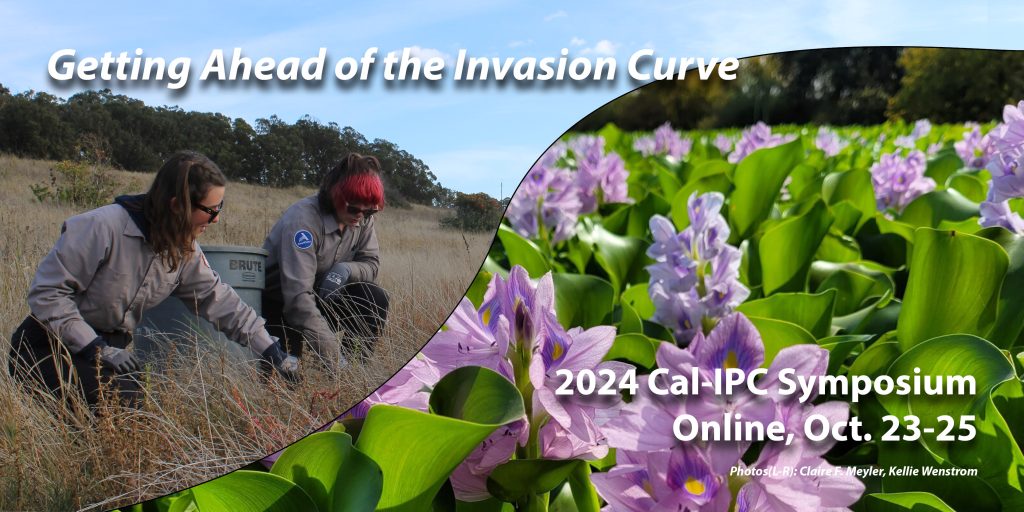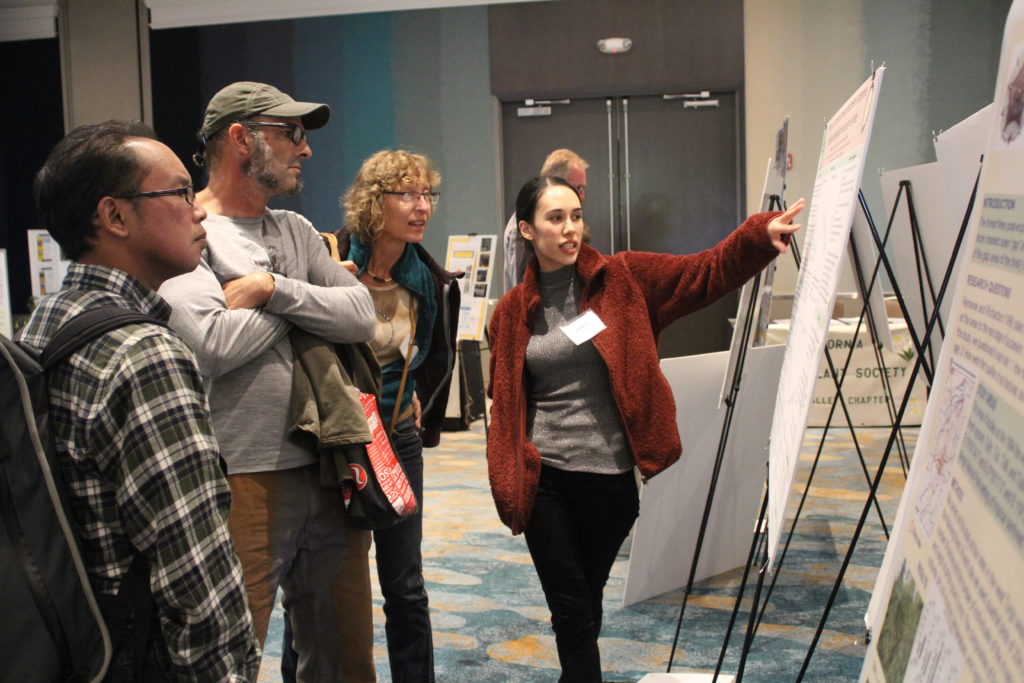
Share your work with us!

A great opportunity to network, learn, and celebrate! Photo: Claire F. Meyler.
Presenters at the Cal-IPC Symposium provide a popular and diverse educational forum for the California land management community. In 2023, we gathered more than 630 colleagues to share and learn.
We welcome presentations on all aspects of invasive plant biology and management in California and beyond, including:
- Aquatics, riparian, and wetlands
- Biocontrol for invasive plants
- Community engagement/volunteer programs
- Grasslands management
- Indigenous perspectives on land management approaches
- Intersection of art and science in weed management
- Invasive plant management in rare plant and sensitive habitats
- Lessons learned
- Mapping, remote sensing, and geospatial technologies
- Monitoring and data-driven adaptive management
- New weeds: identifying and managing
- Regional updates
- Restoration and stewardship
- Tools and techniques
- And more!
Call for Abstracts Opens: April 1
Deadline to submit abstract: June 15
View the Workshop Recording: How to Write and Submit an Abstract
Watched the video and still have questions? Send your follow-up questions to symposium@cal-ipc.org. Thanks!
Student Presentation Contest
Graduate students, undergraduates, and recent graduates (within 1 year after graduation) are encouraged to enter our Student Presentation Contest, which recognizes the top presenters with an honorarium (apply on the Call for Abstracts Form).
Tips for Presenters:
Presentations at the Cal-IPC Symposium are selected to provide a useful and diverse educational forum. Please read and follow the guidelines below when submitting your abstract.
Content guidelines:
We welcome talks and posters on a range of topics and presented in a range of styles and formats. Projects do not need to be completed. Qualitative results and non-traditional formats are welcome. Your abstract should:
- Explain how your information will be useful to others
- Define the goals and rationale of your work.
- Describe all relevant treatment specifics (for instance, application rate of an herbicide and species being treated).
- Provide specifics about factors relevant to your work (invasive plants addressed, treatment techniques, mapping methods, permitting challenges, outreach approach, volunteer recruitment, etc.).
- Do not promote commercial products or services (promotional materials can be distributed by a sponsor in exhibit spaces or sponsor “gallery”).
- If your presentation includes content on the control, biology, or tracking of invasive plants, make that point clear in the title and in the abstract. Presentations with strong content on these topics may receive continuing education credits that helps professionals in the field maintain their licenses. To qualify, presentations need to focus on, or include content on, controlling invasive plants. The licensing agency determines which presentations qualify based on their abstracts.
- The Society for Conservation Biology has useful tips for preparing conference abstracts and presentations (scroll down the page).
- Need help? Read a sample Abstract Submission for an example of desired content – or join our workshop on May 17!
Abstract formatting requirements:
- Word limit is less than 250 words.
- Body of abstract should be a single paragraph. An abstract is a short summary of your presentation. Describe the concept that you are presenting and how it relates to invasive plants, their threat, or their management. Description of a specific project should generally include methods, results, and conclusions as appropriate to the topic. Projects do not need to be completed to qualify.
- Names of organisms should be listed by their common name with scientific name in parentheses. Subsequent references can be by common name. Include any invasive plants that are the focus of your presentation in your abstract.
- Herbicides should be referred to by their active ingredient(s) from the label. Trade names can be used subsequently. Application rates and units of measurement should be clear.
- Capitalize only the first letter of the title and proper nouns.
- Numbers and units should be consistent. Use either Imperial or metric units, but do not mix them.
- Co-authors and partners should be listed if the work you are presenting is part of a team effort. Enter their names and affiliations as they will appear in the program/agenda for the Symposium. Please enter in this format: co-author name (first name last name) with footnote number, comma, next author(s) the same way, then “and” before the final author and footnote number, period. Then list footnote numbers and the affiliations they indicate, separated by commas. Include appropriate capitalization. This text will be copied onto the Symposium platform. (Don’t worry if you cannot make your footnote numbers superscript – we can format.) Example: Harleen Frances Quinzel1,2, Pamela Lillian Isley2, Harvey Dent3, and Oswald Cobblepot4. 1California Biosecurity Initiative, 2Arkham Botanic Research Institution, 3Gotham City Conservation Core, 4Friends of Gotham Gardens.
We post PDF files of talks on our website on the Symposium archive unless you ask us not to when you turn yours in. Oral presentations will be recorded and made available in the archives as well. Questions? Contact symposium@cal-ipc.org.
Deadline to submit abstract: June 15
Thank you for helping to strengthen the California stewardship community!
Return to the Symposium Landing Page
